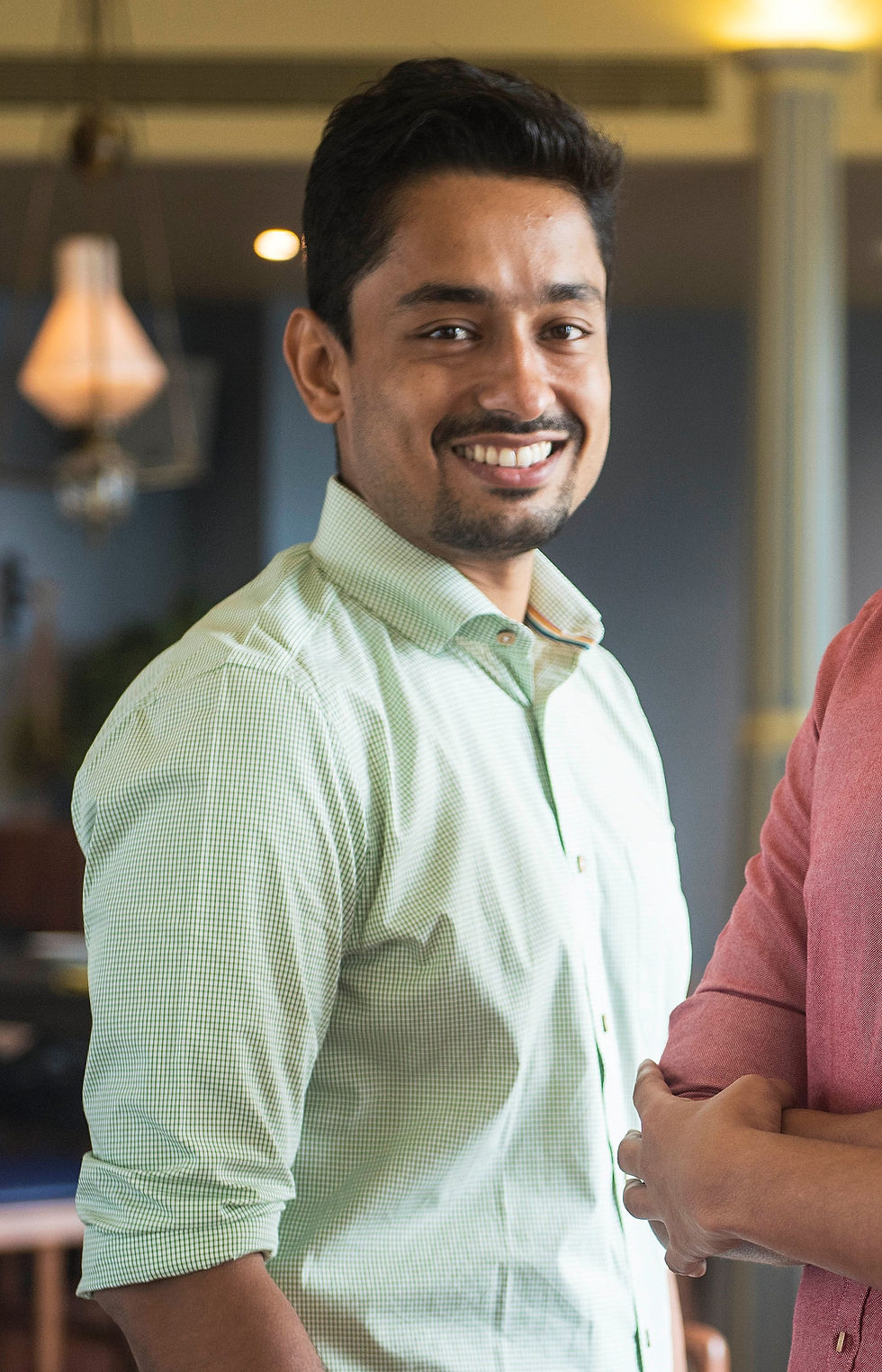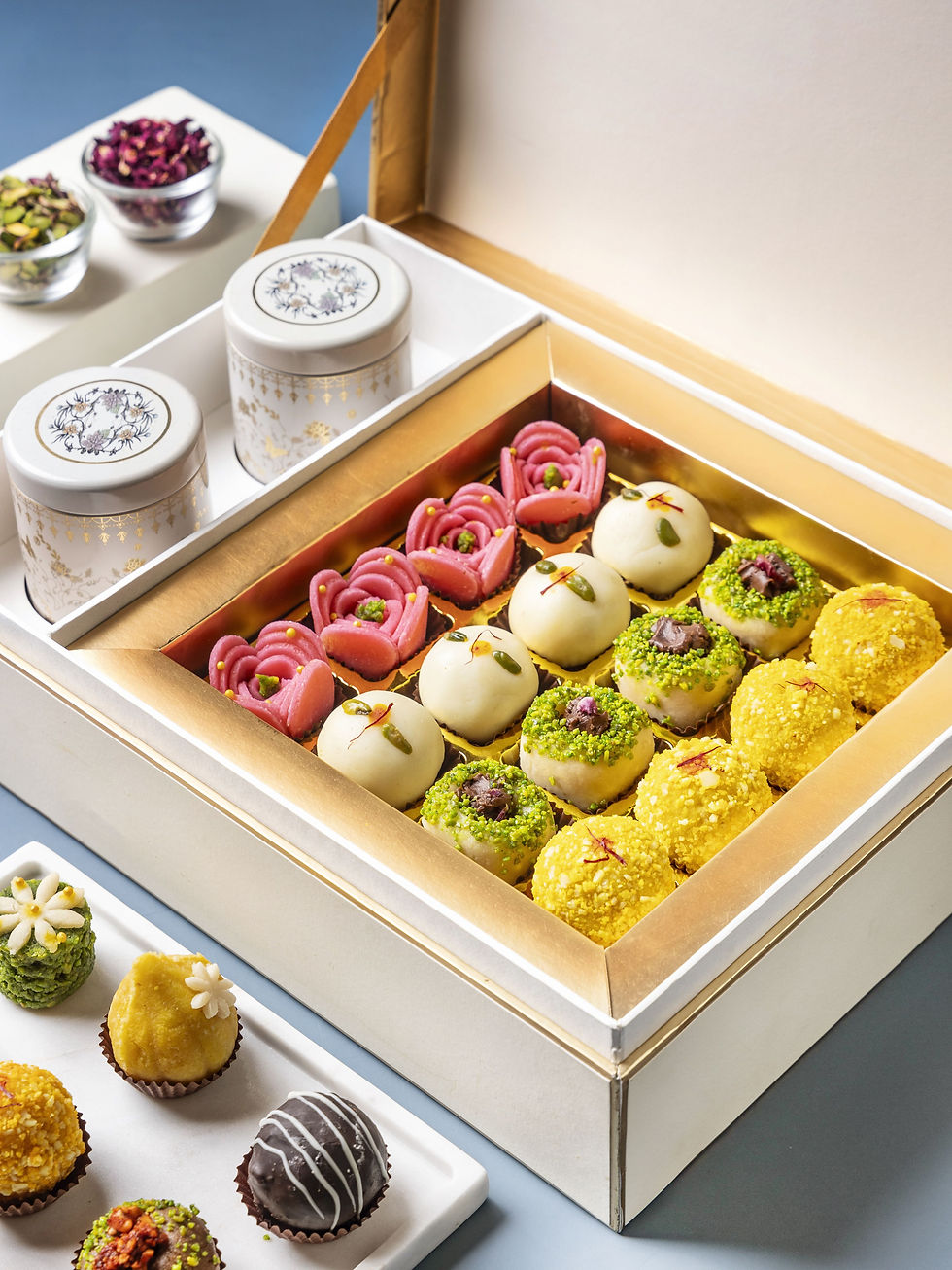Can anything ever replace the classic boondi ladoo? By Vaishali Kolpe

In the days of botox and new-age technology, why should the culinary world be left behind? The humble Indian Mithai has come a long way since grandma’s homemade laddu and halwa as it gets a face-lift and an interesting makeover. Mithai (or sweetmeats) has been an integral part of India’s culinary heritage for centuries now. A must-have for every happy occasion, be it weddings or festivals. Every state of this beautiful country has something unique and delicious to offer.

Over the years, the corner-side mithai-wala has dramatically evolved into new-age sweet shops that cater to every discerning customer with some incredible confections whipped up especially for weddings and gifting alike. From the spongy-soft rasgullas, syrup-soaked jalebis and indulgent gulab jamuns to the barfis and pedas, we have seen an array of sweet goodies that find their way to be a fitting end to any meal, at a special occasion or simply to satiate one’s sweet tooth. However, with evolving tastes, preferences and not to mention health being a large focal point, the landscape of Indian sweets is undergoing a dramatic transformation.

"What makes a good Motichoor a great one is the boondi itself. It’s when you can spot each boondi in the laddu, as though they are pearls or caviar, each one of the same size!" –Sameer Seth, Founder Bombay Sweet Shop
Traditionally, Indian sweets were known for their liberal use of sugar, ghee and various other calorie-dense ingredients. But now, one is witness to a significant shift towards healthier alternatives where successful experiments with sugar alternatives like jaggery, honey, khand, dates while also using dry fruit in plentiful along with flour alternatives like almond, coconut, millet etc. that make for some delicious concoctions. These are beneficial to not only health-conscious consumers but also those with dietary restrictions. A clear case of 'you can have your mithai, and eat it too.'

Although all-time favs like the barfi and laddus still hold their ground, contemporary Indian sweets are witnessing a surge in innovative flavours teamed with exotic ingredients. Global influences are slowly seeping into traditional mithais as they give birth to a fusion of flavours that are both innovative and delicious. We talked to the people behind Bombay Sweet Shop, Khoya and Varque who in their inimitable style gave us a virtual view of their confections and the thought behind these popular innovations. Sameer Seth, Founder and CEO of The Bombay Sweet Shop told us, “We’ve embraced innovation by experimenting and combining traditional Indian mithais with international flavours, techniques or even nostalgia-inspired creations.” While we see how people love their sweet indulgences when it comes to gifting or a post-meal ‘cheat treat’, Sameer adds, patrons with evolved palates in today’s day and age want mithai that is contemporary, relevant, fun and conscientiously made for daily indulgence.” With this in mind, they have launched a Cheat Sweets Collection that’s made without any white or refined sugar. Their delicious yet healthy treats consist of mithais like the Vegan Power Laddu that’s sweetened with natural ingredients like dates, jaggery or coconut sugar and is loaded with cashews, almonds, pistachios, figs, puffed amaranth, seed mix and cardamom. There’s also the Coffee Milk Cake that comes with a mix of coffee, cashews and charoli with jaggery and coconut sugar. Their Hazelnut Besan Barfi is a modern take on the popular besan laddu, made up of jaggery, ghee, Bengal gram flour, cardamom, nutmeg and Kashmiri saffron - topped with crunchy-toasted hazelnuts.

“Mithais have become visually appealing with awe-striking presentations and innovative shapes, making them the ideal gifts for festive occasions.” Arpan Sachdev, Founder of Varque
Speaking of nostalgia, Sid Mathur, the name behind the ever-popular ‘Khoya’ talks about the feel-good factor and says, “When we launched Khoya, it was about getting back to the roots, telling people about the stories, understanding the history, re-working ingredients and upgrading the packaging for people to gift and receive.” He further adds, “We believe that everyone should have the opportunity to enjoy our wonderful Indian mithais, regardless of dietary restrictions. Our Sugar-Free Mithai Collection is a testament to our commitment.” With the overwhelming demand and requests from clients to create a sugar-free line, they’ve worked on 5 classic flavours - Pink Coconut Laddu, Roasted Besan Laddu, Kesar Barfi, Bikaneri Barfi, and the timeless Classic Khoya.
Arpan Sachdev of Varque adds, “Mithais have become visually appealing with awe-striking presentations and innovative shapes, making them the ideal gifts for festive occasions.” Their Blueberry Badam Laddu, Rose Motichoor and the traditional Barfi are what keep their clients returning for more. Despite all the changes, everyone would agree that the mighty Motichoor Laddu, a timeless classic, should remain unchanged. One of the most underrated, yet indispensable when it comes to weddings, festivals and every other celebration, Sid tells us, “The Boondi ladoo has remained the centrepiece of Indian Weddings. From welcoming your guests at the entrance, to the couple itself taking a bite each at the Mandap, new beginnings and mithai go hand in hand.” While Sameer insists “For many of us, it was probably the first sweet we enjoyed outside of our homes. What makes a good Motichoor a great one is the boondi itself. It’s when you can spot each boondi in the laddu, as though they are pearls or caviar, each one of the same size!” They have perfected the same, and with great taste but minus the excessive ghee and sugar like in the commercial ones. Arpan feels, “New-age brides and grooms are often looking for newer iterations of mithais that maintain traditional flavours and quality, and yet offer something unique and exciting. So while the Boondi Laddu holds a place in many hearts, there is a growing appreciation for creative and innovative variations that cater to evolving tastes and preferences.”
“The Boondi ladoo has remained the centrepiece of Indian Weddings. From welcoming your guests at the entrance, to the couple itself taking a bite each at the Mandap, new beginnings and mithai go hand in hand.” – Sid Mathur, Founder, Khoya
The changing face of Indian sweets is a testament to the dynamic nature of culinary traditions. While the classics remain close to the consumers’ hearts, the heady potion of innovation, health consciousness, and global influences have breathed new life into this cherished flavour of Indian cuisine. As we move forward, the landscape of Indian sweets keeps its promise to continue evolving while all the same, offering a delightful blend of tradition and innovation for generations to come.









댓글